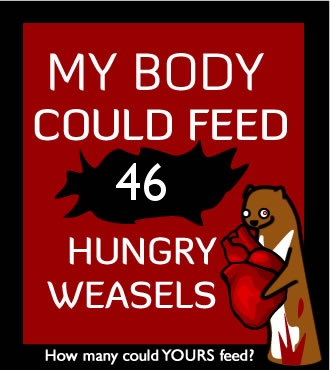With a name like vampire squid, I really don’t have to look any further for a flashy, eye-grabbing title. Yep, there is a squid out there actually called the vampire squid. Have you seen it? If you have not, you really should. How can you resist with a name like that?
Luckily, you can see this fab deep-sea denizen thanks to the Monterey Bay Aquarium Research Institute (MBARI) and their incredible remotely operated vehicle (ROV) technology that allows them, and now you, to watch these animals in their natural habitat. Some of this incredible footage was just placed on YouTube for everyone to see.
The vampire squid, or Vampyroteuthis, is actually not considered a true squid, but is a close relative of both squids and octopods, all of which form the group known as cephalopods. There are many true squids in the squid family, and many octopods in the octopus family, but only one Vampyroteuthis. A single species that, in and of itself, makes up the last remaining member of its family. It is considered a phylogenetic relic; a remnant of a group of organisms that has long since gone extinct.
You probably wont see this creature on display at the Monterey Bay Aquarium any time soon. It routinely lives between 2000 and 3000 feet, in a region called the Oxygen Minimum Zone, or OMZ. This is a hard habitat to replicate, not to mention how difficult it is to capture and transport one of these fragile animals successfully.
And they are, in fact, fairly fragile. They reach only a foot in length when fully grown. They’re sort of squishy and gelatinous. They swim slowly, and spend much of the time drifting passively. Swimming fast probably isn’t something they can pull off too often. Because they live in cold, oxygen-poor regions of the deep-sea, Vampyroteuthis has a very low metabolism, the lowest of any cephalopod.
The vampire squid also does not suck blood, or turn into a bat at night. However, it does have wing-like fins on the sides of its head, which propel Vampyroteuthis through the water. And, it has webbing between its legs that almost give it the appearance of being wrapped in a cape or cloak. It is dark reddish black in color, and lives in the deep ocean where there is virtually no light from the sun.
Light from the sun, however, is not needed for Vampyroteuthis. Instead, it makes its own light, as it is covered with light producing organs called photophores. It has highly sensitive eyes. Cephalopod eyes, in general, have many of the same features as the vertebrate eye (that’s your and my eye). Therefore, they have very good vision, and a relatively well-developed nervous system for processing that information.
Vampyroteuthis also lacks two abilities common in other cephalopods. It cannot change color. And, it does not ‘ink.’ However, these two features are hardly needed in the deep-ocean habitat.
Be sure to check out the links!
Taking the bite out of snake venom
5 hours ago





